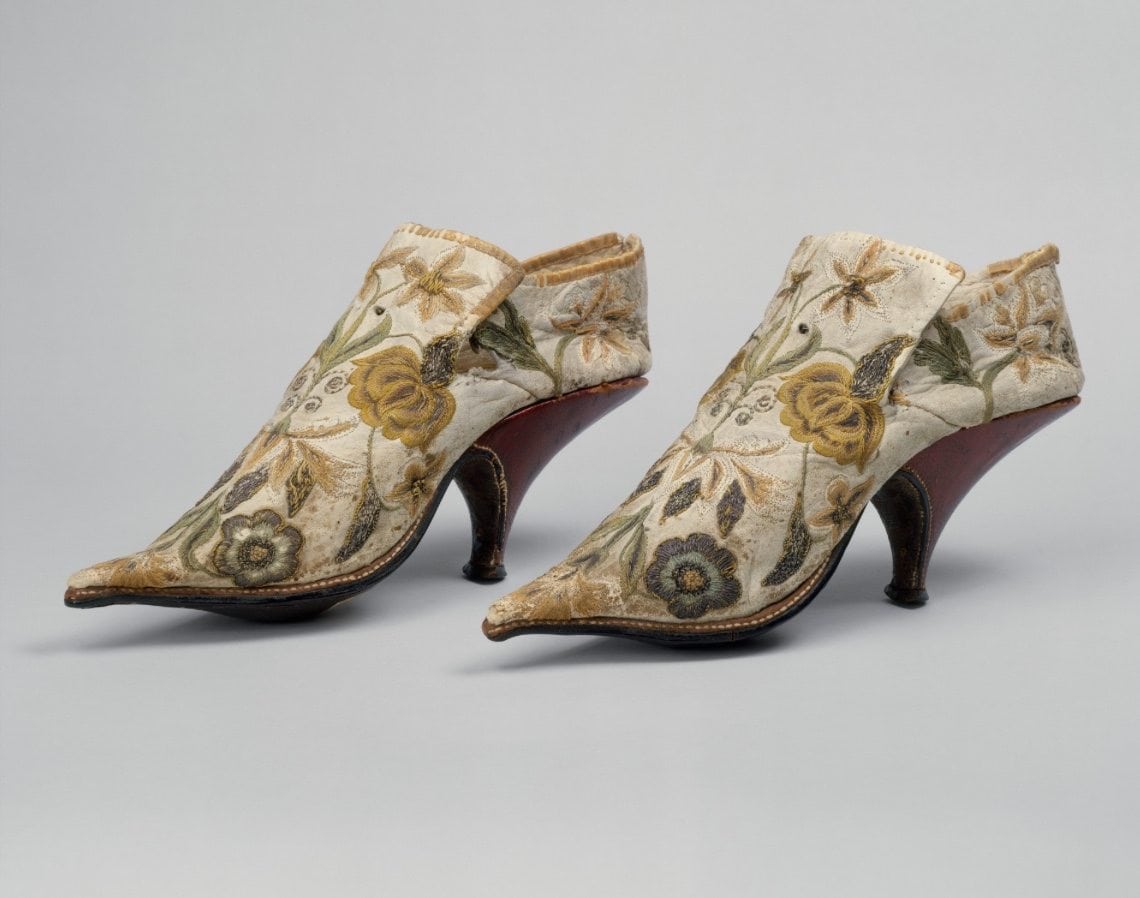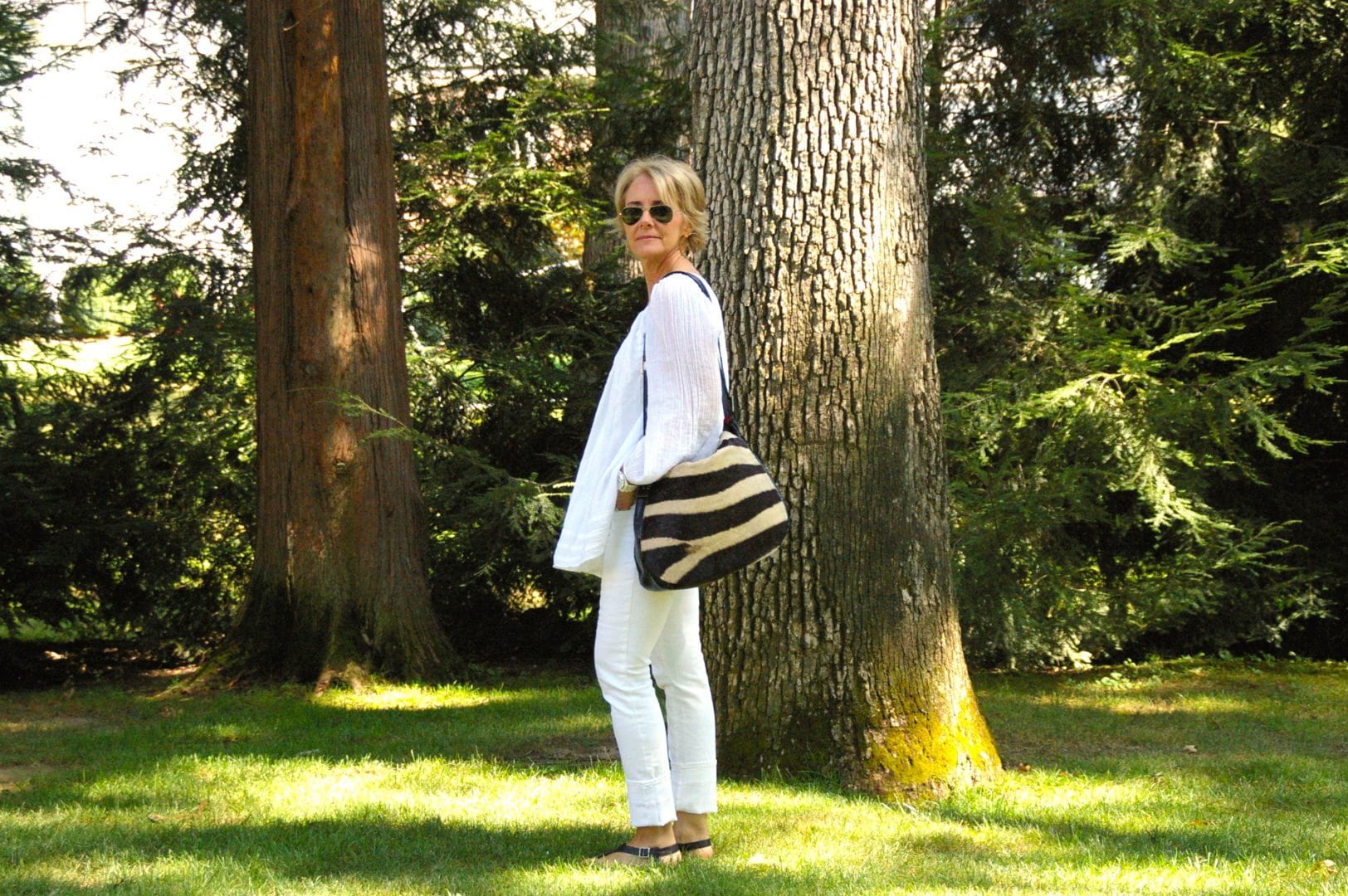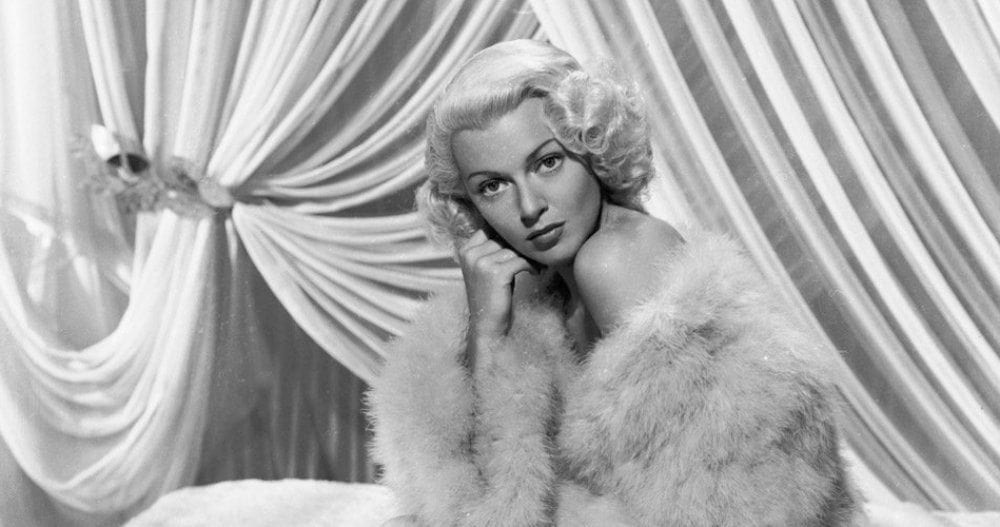“I don’t know who invented high heels, but all women owe him a lot.” –Marilyn Monroe
For centuries women have teetered their way to fashion’s greatest heights on a shoe that remains the ultimate sign of feminine style and sex appeal. Kind of ironic since most iconic women’s shoe designers are men: Roger Vivier, Manolo Blahnik and Christian Louboutin, to name a few.
What’s even more interesting, the high-heeled shoe originated not within the feminine sphere but in menswear!
Elizabeth Semmelhack, shoe expert and Senior Curator at the Bata Shoe Museum, has spent years tracking the evolution of the heel, as explored in this amazing exhibition, Standing TALL: The Curious History of Men in Heels.
Semmelhack’s research reveals the heeled-shoe originated as early as the 10th century in Western Asia. Developed out of a functional need, men needed a heel while riding horseback to keep their feet from slipping out of the stirrup.
Who knew the ancestor to the cowboy boot was the first high heel?

ALTHOUGH MUCH LATER THAN THE 10th CENTURY, THIS 1635 PAINTING OF COUNT-DUKE OF OLIVARES SHOWS HIM TO BE WEARING HEELED-BOOTS.
Heels did not appear in fashionable European attire until the turn of the 17th century. Semmelhack credits this to the rise and influence of Persia and the fascination with the exotic and mythical Orient.

THE DUKE OF RICHMOND AND LENNOX, 1633, COUSIN OF CHARLES I, KING OF ENGLAND. THE GREYHOUND ALLUDES TO HIS NOBILITY AND HUNTING PRIVILEGES.
While the heeled-shoe was adopted by men and women, it was considered masculine attire. “Trendsetting ‘mannish women’ were the focus of ridicule,” notes Semmelhack. “They were accused of having their hair cut in manly styles and were lampooned for wearing military-inspired accessories… It appears that heeled footwear was another means by which women masculinized their attire in the early 17th century.”
Men’s heels reached their apex under the reign of French King, Louis XIV. The “Sun King’s” own shoes reportedly reached heights of five inches. During his reign, 1643 to 1715, he designated high hair and high heels as a prestigious symbol of luxury and social status.
While Christian Louboutin’s name is synonymous with the red-soled stiletto, it finds precedence in Louis XIV’s kingdom where sumptuary laws (designed to curb excessive personal extravagance and protect fortunes) reserved red-soled shoes for nobility.
In the 18th century men’s heels fell out of favor, a combination of the restrained English attire and the ideas of the Enlightenment which professed men’s power lay in their rational minds, not in their appearance. Fashion was deemed frivolous and left to the “irrational” sex, and with it, the high heel.
The French Revolution solidified the fate of the extravagantly dressed man. Luxuries once condoned by the ill-fated King Louis XVI and his wife, Marie Antoinette, were traded for a simpler, more practical mode of dress. Women adopted flat shoes to accompany their Greco-Roman inspired white chemise gowns. Men traded stockings and breeches for full length pants and flat or modestly heeled boots. By the 1800’s, women’s fashion regained its colorful, decorative and cumbersome qualities, but men’s fashion did not.
English psychologist, John Carl Flügel, referred to the 19th century menswear movement toward uniformity and conformity as “the Great Male Renunciation.” The high heel, once an expression of masculinity and prestige, gained feminine connotations from which it never truly returned.













1 Comment
Very interesting post! As a cowgirl and orthopedic surgeon, I can certainly speak to the dangers of not having a heel on the riding boot, and to the dangers of wearing a high heeled shoe, as both result in injuries, both minor as well as devastating!